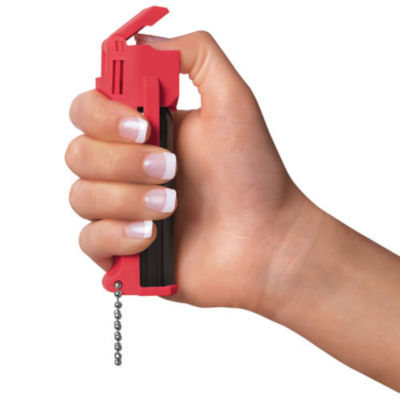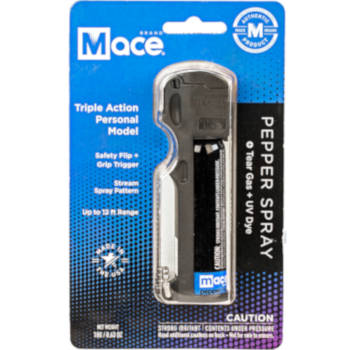Can You Carry Pepper Spray On A Plane?

Can You Bring Pepper Spray on a Plane? TSA Rules & Airline Policies
Is Pepper Spray Allowed on Planes?
Yes, but only in checked luggage. The TSA prohibits pepper spray in carry-ons, but you can bring one canister (up to 4 oz) in checked bags if it:
✅ Has a safety mechanism to prevent accidental discharge
✅ Contains less than 2% tear gas
❌ Not Allowed in Carry-On
✅ Allowed in Checked Bags (With Restrictions)
TSA Rules for Carrying Pepper Spray on a Plane
| Item | Carry-On | Checked Bag |
|---|---|---|
| Pepper Spray | ❌ Not Allowed | ✅ Up to 4 oz (With Safety Mechanism) |
| Mace | ❌ Not Allowed | ✅ Up to 4 oz (With Safety Mechanism) |
| Bear Spray | ❌ Not Allowed | ❌ Not Allowed |
| Personal Alarms | ✅ Allowed | ✅ Allowed |
Mace Triple Action Contains Tear Gas
What Happens If You Bring Pepper Spray in Carry-On?
- Confiscation at security
- Possible fines or legal trouble
- Delays & missed flights
To avoid these risks, always pack it in checked luggage and follow TSA and airline policies.
Check Airline-Specific Policies Before You Fly
Not all airlines allow pepper spray in checked bags. Check directly with your airline before packing. Some states and countries ban pepper spray entirely, so verify local laws before traveling.
TSA-Approved Self-Defense Alternatives for Travelers
Since pepper spray isn’t allowed in carry-ons, consider these TSA-approved self-defense options:
✅ Personal Alarms – Loud sirens to deter threats
✅ Tactical Flashlights – Disorient attackers with high-lumen beams
✅ Self-Defense Keychains – Discreet tools for protection, such as a kubotan.
Can be used as a Kubotan
Final Travel Tips
- Double-check TSA & airline rules before packing.
- Ensure pepper spray meets safety requirements (4 oz max, safety lock).
- Never attempt to bring it in carry-on—it won’t make it past security.
Add your comment now!
Post CommentRecent posts
-
03/12/2025Best Stun Guns for Self-Defense in 2025
-
03/11/2025How to Prevent Kidnapping – Top Safety Tips
-
03/11/2025What Do Rapists Look For? 10 Red Flags to Avoid


